From field to plate: A mango’s journey
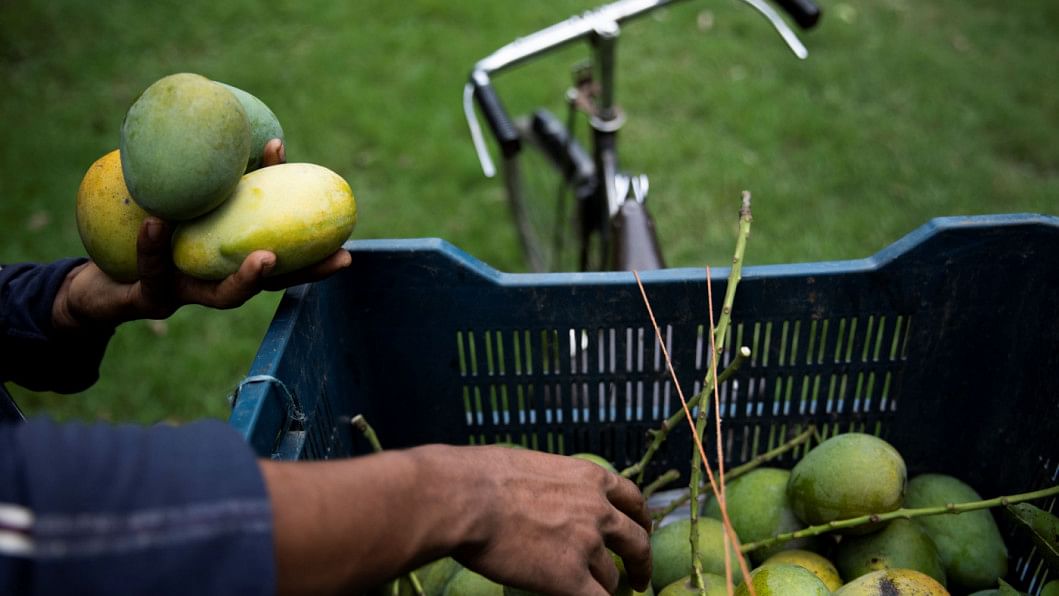
During summer, mangoes take over every household in Bangladesh. Sometimes in the form of snacks, sometimes in the form of substitute for a meal, and sometimes just because…why not? But ever wonder how the mangoes come to your table from the field? We are about to take a look into that journey that a mango has to go through to reach your table.
Different routes
Mangoes can go through different channels that take them from the field to the consumer. For example, it can run through different people or it can run through one regulator. These regulators are often called 'bepari' and their bidding starts as early as when the mango flowers bloom.
"The beparis come when the mukul (flower) shows. They walk through the mango garden, watch the mukul carefully and then make an estimate. Then they bid for trees or the whole garden. If the offers are good, we accept them. After that, it's entirely up to the bepari. Whatever happens, it's their concern", said Shariful, a mango farmer from Chapai Nawabganj.
Not all trees are sold to the beparis. Chapai Nawabganj is the mango capital of Bangladesh and most of the mangoes that are produced here circulate through a different set of channels. Recently, a large number of gardeners have resorted to online business and they can sell mango directly over a phone call. Mangoes that are to be exported are usually nurtured in protective bags and will also follow a different route. Exports of mangoes has been increasing lately and keeps showing great potential for the coming days.

When does it start?
The farmers are well aware of the condition of the mangoes and they also account for the ripeness and the journey it has to take to reach the consumers. They take all these into account when they collect the delicious fruits from the trees. Usually, collection starts late afternoon or very early in the morning. This goes on for a few hours until a few mounds of mangoes are collected. Then it goes into the baskets or crates.
Each farmer has a contact with a van or a transport of some sort. Collecting mangoes and taking them to the wholesale market is a daily affair during harvesting season and therefore a fixed transport is imperative for their business. Once collected and packed in baskets, the mangoes go from the farmer to the wholesale market, either on bicycles or vans.
The road starts here
The wholesale market is where the real journey starts for the mangoes. Till now the fruits were under the tender nursing and caring of the farmers, but once they arrive at the wholesale market, the mangoes are ready for their journey. The wholesale markets are always buzzing with people from all across the country. The Kansat wholesale market at Chapai Nawabganj, is well known for its grandeur and every year this market supplies mangoes to at least 55 districts in the country.
There's usually a bargaining battle at the wholesale market between the farmer and the buyer. The buyer could be a representative of a warehouse, a businessman from Dhaka, or just a middleman. Once the price is settled after a heated bargaining, the mangoes are usually sent to a warehouse (arat) and thus they part with the farmers.
The warehouses and aratdars play an important role in this part of the mango chain. They offer multiple services to the farmers as well as buyers from all across the country.
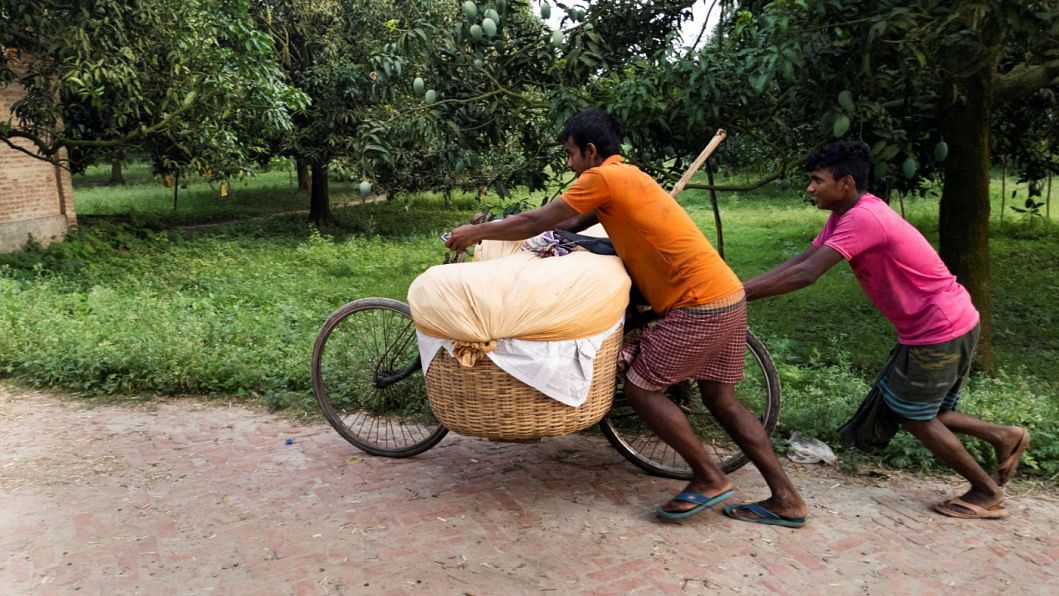
"Some of these folks, they come from far away and have no idea where to go after they buy mangoes in bulk. There's the issue of packaging, transport, labourers any so on. We take care of those troubles for them", said Md Selim, one of the aratdars from Kansat wholesale market.
For each successful sale at the wholesale market, the farmers pay a toll at the end of the day in the form of Tk 25 for each basket and Tk 6 for each crate. The wholesalers collect a separate fee from their buyers for the packaging, loading, and unloading.
Entering the city
It sure sounds dramatic when it's said like that. But once they are sent to the warehouses, the mangoes are packed well for a long journey. Usually there are huge shipments of mangoes that goes over a few hundred kilograms and they will be on the road for the better part of a day; sometimes even more depending on the traffic condition. Therefore, packaging needs to be done with care so the mangoes are not damaged en-route.
Once packed, maunds of mangoes are loaded onto trucks. Then it's about a day's trip for them to reach the big cities like Dhaka. Fruit wholesalers are waiting here for this particular shipment. It's mango season after all and deliciousness such as Himsagar or Amrapali are high in demand (as well as price) here.
Into the market
The wholesalers usually do not handle the retail customers. The retail sellers, hawkers or businessmen with smaller business go up the markets and buy mangoes in bulk from the wholesalers. Then they present the mangoes to the average buyers, neatly arranged in a crater or on display in a bamboo basket. This is where people like you and I come across mangoes in the cities.
"By the time the mangoes arrive here in the city, they are in perfect ripeness. The mangoes become ripe almost sequentially, one after another and the farmers pack them in the baskets according to that order" said Alam, a mango retailer. There is another bargaining battle here, at the end of this mango chain just like there was at the beginning. Regardless of how much you pay for it, the average Bengali is almost always happy once they have bought some mangoes and they cannot wait to get home to take a bite.
Once you take it home, you can serve it in slices or pieces or however you wish. The long journey of the mangoes has finally ended and successfully so as soon as you take a bite of this juicy deliciousness.

 For all latest news, follow The Daily Star's Google News channel.
For all latest news, follow The Daily Star's Google News channel. 

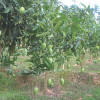

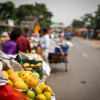


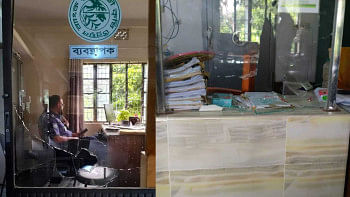
Comments